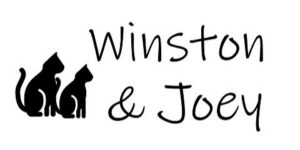Getting your kitten used to claw trims early is one of the best things you can do for their long-term health and your furniture’s survival. But for many cat owners, especially first-timers, the idea of clipping tiny, twitchy paws can feel more like prepping for battle than routine grooming.
Don’t worry. You don’t need superhero reflexes or a background in professional grooming. With the right technique, a little patience, and some tasty treats, you can make nail trims a stress-free experience for both you and your kitten.
Why You Should Trim Your Kitten’s Claws
While wild cats rely on their claws for survival, your indoor kitten has slightly different needs. Regular claw trimming helps with:
- Preventing accidental injuries during play (those claws are like mini fishhooks)
- Reducing furniture damage from scratching or snagging
- Avoiding painful overgrowth, where claws curl and grow into paw pads
- Training your kitten early so it becomes part of their normal routine
It’s also about safety: for you, your kitten, and anyone they interact with. Starting this habit early helps prevent claw-related accidents and future resistance to handling.
When to Start Claw Trims
You can begin trimming your kitten’s claws as early as 8 weeks of age, provided they’re comfortable being held. Kittens learn quickly, and the earlier you begin, the more likely they are to accept the process without a fuss.
As a general rule, trim their claws every 2–3 weeks. You’ll know it’s time when:
- You hear clicking on hard surfaces
- Their claws feel extra sharp during play
- They get stuck in soft surfaces like blankets or carpet
If your kitten is especially active or destructive, more frequent trims may be helpful until their behavior mellows out (or until they finally understand your couch isn’t a scratching post).
Getting Set Up: What You’ll Need
Before you even touch a paw, make sure you’re prepared:
- Pet-safe nail clippers: Choose cat-specific clippers, either scissor-style or guillotine-style.
- Towel or blanket: Great for gentle restraint (and for your own protection).
- Treats or soft food: Use high-value rewards your kitten loves.
- Styptic powder or cornstarch: For accidental nicks that may cause bleeding: better safe than sorry.
- Good lighting: You want to clearly see the claw and the quick (the pink part with blood vessels).
Set up in a quiet, distraction-free space, and make sure you are calm too. Your kitten can sense your stress.

Scratch this. Don’t scratch that. Oh, sure, I’ll use the scratching post, because clearly that’s the only place I’m allowed to scratch. Nevermind the fact that there’s a perfectly good couch over there that is just begging to be shredded. #ScratchingPostOnlyPlease #TheCouchIsBoringAnyway #HumansAreSoPicky #ThisIsWhyWeCan’tHaveNiceThings
Joey
Step-by-Step Guide to Trimming Claws
- Pick the Right Time
Choose a time when your kitten is relaxed, like after a nap or a meal. Avoid trying this when they’re zooming around the house like a furry tornado. - Get Comfortable
Sit in a chair with your kitten on your lap, or gently wrap them in a towel “burrito style” with one paw exposed. Some kittens are fine without restraint; others need a little extra security. - Examine the Claw
Press gently on the paw pad to extend the claw. You’ll see a clear outer tip and a pinkish area closer to the paw: that’s the quick. Avoid cutting into it. It’s sensitive and will bleed if nicked. - Trim the Tip
Clip only the sharp, curved end of the claw: just a couple millimeters. Better to trim too little than too much. - Take Breaks if Needed
If your kitten gets squirmy, stop and try again later. You don’t have to trim all their claws at once. Even doing one paw per day is totally fine. - Reward Immediately
As soon as you finish a paw (or even a single claw), reward your kitten with treats and praise. Positive associations make the next session easier.
Training Tips for Success
The goal isn’t just to get it done. It’s to train your kitten to tolerate and eventually accept claw trimming. That takes consistency and patience. Here are a few bonus strategies to help:
Related read: Why Declawing Your Cat Does More Harm Than Good.
- Touch their paws regularly, even when you’re not trimming. This desensitizes them to handling.
- Let them sniff and investigate the clippers so they don’t see them as a threat.
- Use clicker training or verbal praise to reinforce calm behavior.
It’s okay if your kitten doesn’t love it right away. Like any new experience, it takes time.
What If Things Go Sideways?
If your kitten:
- Panics
- Cries or hisses
- Claws their way out of your arms
…don’t force it. Take a break. Go back to paw-handling practice and try again later. For especially difficult kittens, your vet or a groomer can help you with the trim, or give you a demo so you feel more confident doing it at home.
Common Mistakes to Avoid
- Cutting too close to the quick – Ouch! It hurts and bleeds, and your kitten won’t forget it.
- Using dull or human nail clippers – These can crush the claw and cause discomfort.
- Skipping trims for too long – Letting claws grow out makes them harder to manage later.
Final Thoughts: Keep It Low-Stress and Routine
Trimming your kitten’s claws doesn’t have to be a struggle. With gentle handling, a little practice, and a lot of snacks, you can make claw care just another part of your bonding time.
Think of it like brushing your cat’s teeth: awkward at first, but once it’s part of the routine, it’s no big deal. And trust us, your future self (and your furniture) will thank you.
Sources:
– Cat Claw Trimming Basics https://www.aspca.org/pet-care/cat-care/cat-grooming-tips
– How to Trim a Cat’s Nails https://www.humanesociety.org/resources/trimming-cats-claws
– Kitten Grooming 101 https://vcahospitals.com/know-your-pet/grooming-your-kitten
– Nail Trimming and Handling Tips https://www.petmd.com/cat/grooming/how-trim-cat-nails
– Positive Reinforcement for Cats https://www.icatcare.org/advice/positive-reinforcement-training/
Recent Posts
Explore why cats sleep so much, including the evolutionary reasons and the health benefits they derive from their extensive sleep patterns.
Explore the causes of cat dandruff, its implications, and effective ways to deal with it so your feline friend remains happy and healthy.


